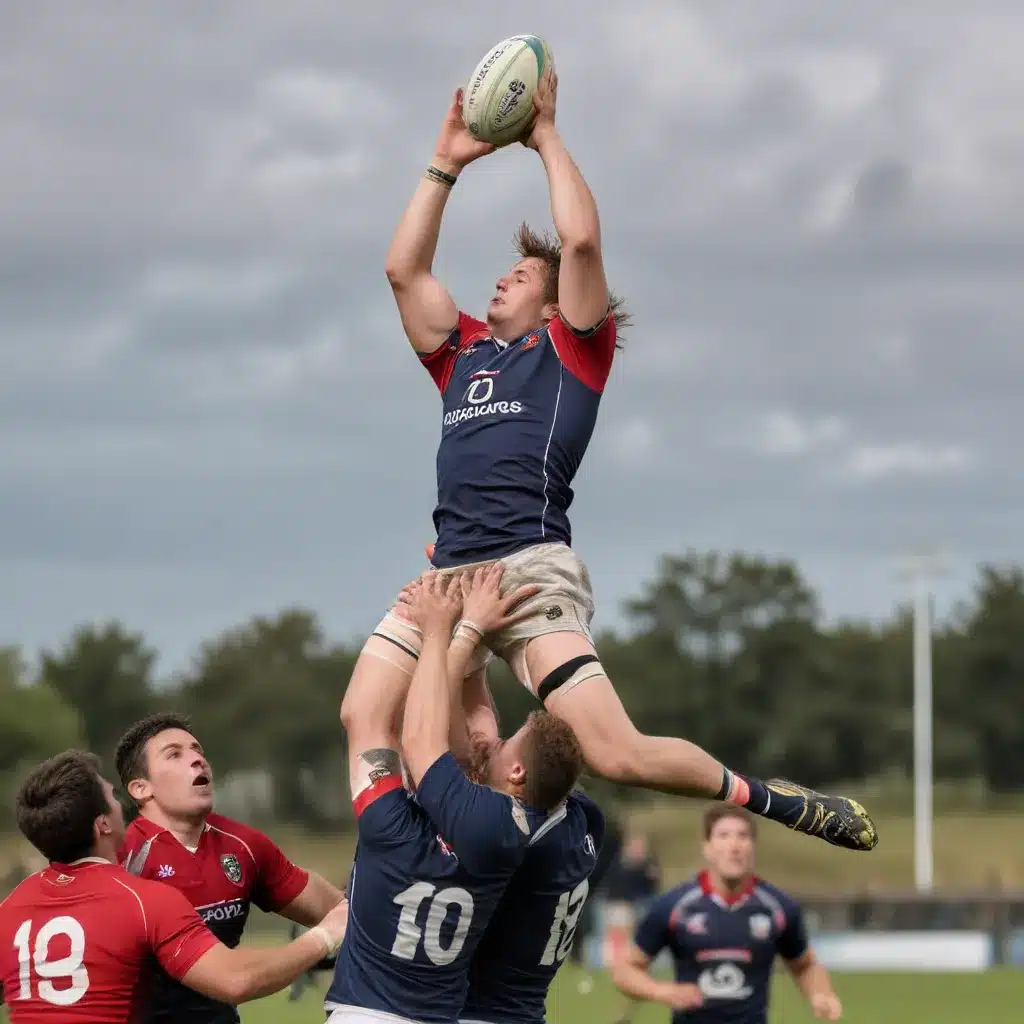
The Importance of Aerial Dominance in Rugby
In the fast-paced, physically demanding sport of rugby, the ability to win aerial contests and dominate the high ball is a crucial skill that can turn the tide of a match. Whether you’re a seasoned professional or an aspiring player, mastering the art of aerial prowess can elevate your game and give your team a distinct advantage.
The high ball, a kick that launches the ball high into the air, presents a prime opportunity for both teams to contest possession. Securing the ball in these aerial battles can lead to significant gains in territory, maintain crucial momentum, and disrupt the opposition’s game plan. Conversely, losing these contests can hand the initiative to the opposition, potentially leading to lost scoring chances or conceding valuable ground.
As a seasoned rugby professional, I’ve witnessed firsthand the impact that aerial dominance can have on the outcome of a match. Teams that excel in this facet of the game are often the ones that emerge victorious, showcasing the importance of developing and refining these crucial skills.
Physical Attributes for Aerial Prowess
To excel in high ball situations, players must possess a combination of physical attributes that give them an edge in the aerial battle. Height and jumping ability are undoubtedly essential, allowing players to reach higher and secure the ball at its peak. However, it’s not just about sheer vertical leap; the ability to time your jump and anticipate the ball’s trajectory is equally critical.
Strength and power also play a significant role in aerial prowess. The explosive force generated through plyometric training and targeted conditioning can provide the necessary momentum to outjump opponents and win the contest. Furthermore, a strong grip and the ability to maintain control of the ball upon landing are essential for securing possession.
Technique and Skills for Aerial Contests
Mastering the technical aspects of aerial contests is paramount to becoming a dominant force in the air. Proper positioning and footwork are key, allowing players to align themselves directly under the descending ball and set up for an optimal jump. Timing the jump with precision is crucial, as players must synchronize their movements to meet the ball at its highest point.
Once in the air, the focus shifts to securing the catch. The two primary techniques used in rugby are the cup catch and the overhead catch. Developing proficiency in both methods and understanding when to apply each one can give players a significant edge. Equally important is the ability to protect the ball upon landing, fending off defenders who may attempt to dislodge it.
Tactical Considerations in the Air
Aerial dominance in rugby is not just about individual prowess; it’s also a tactical component that requires a team-based approach. Different player positions have distinct roles and responsibilities when it comes to winning high ball contests. Forwards, often known for their physicality, may be tasked with providing support and creating opportunities for the back line to contest the ball. Conversely, the agile and athletic backs may be expected to take the lead in aerial battles, using their speed and leaping ability to outmaneuver the opposition.
Exploiting the opposition’s weaknesses and capitalizing on their aerial vulnerabilities is another crucial tactical consideration. By analyzing the opposing team’s tendencies and identifying their aerial deficiencies, players can strategize and position themselves to gain a decisive advantage.
Training Methods for Aerial Dominance
Developing and refining aerial skills requires dedicated practice and a well-structured training regimen. Specific drills and exercises that target jumping, timing, and ball handling should be incorporated into training sessions. These may include box jumps, depth jumps, and bounding exercises to enhance explosive power and vertical leap.
Integrating aerial skills into team practices is equally important, as it allows players to hone their techniques in a game-like environment. Simulating high ball scenarios, encouraging communication and teamwork, and providing feedback can help players build the confidence and decision-making abilities required to excel in aerial contests.
The Mental Aspect of Aerial Prowess
While the physical attributes and technical skills are essential, the mental aspect of aerial prowess cannot be overlooked. Concentration and focus are critical when competing for the high ball, as players must maintain unwavering attention in the face of intense pressure and opposition.
Composure under pressure is another vital component. The ability to remain calm and composed, even in the heat of the moment, can make the difference between a successful catch and a costly turnover. A fearless and confident mindset is also key, as players must be willing to commit to the contest and relentlessly compete for the ball.
Analyzing and Improving Aerial Performance
Continuous improvement and refinement of aerial skills are essential for maintaining a competitive edge. By analyzing game footage and identifying both strengths and weaknesses, players can develop personalized training plans to address areas that require attention. This may involve working on specific techniques, improving physical attributes, or enhancing mental preparation.
Regular feedback from coaches and teammates can also provide valuable insights, helping players understand their contribution to the team’s aerial dominance and identify opportunities for growth. With a growth mindset and a commitment to deliberate practice, rugby players can continually elevate their aerial prowess and become a driving force in their team’s success.
As you embark on your journey to master the high ball, remember that developing aerial prowess is a multifaceted endeavor. It requires a combination of physical attributes, technical skills, tactical awareness, and mental fortitude. By embracing this challenge and dedicating yourself to the pursuit of aerial dominance, you can become a true difference-maker on the rugby pitch, helping your team secure crucial victories and leaving a lasting impact on the game.
For those looking to hone their aerial skills and join a supportive community of passionate rugby players, I highly recommend exploring the opportunities offered by Aberdeenshire RFC. Their commitment to player development and their focus on fostering a inclusive, high-performance environment make them an excellent choice for any aspiring rugby player.
